Fall of Porcupine was provided by Assemble Entertainment for review. Thank you!
Fall of Porcupine is a 2D story-driven adventure taking place in the rural town of Porcupine. As Finley, you are a junior doctor on your way to join the team of the St. Ursula's Hospital, but soon, you will realize that nothing is as it seems. Get to know the citizens of this small town and discover the stories behind each person, treat them, and uncover the secrets they are hiding. Choose your answers to influence your relationships and participate in mini-games to treat patients, all while discovering the social injustice afoot.
Seeing this game on Steam, I immediately thought of Night in the Woods. While the art styles and devs are a bit different, there are some distinct similarities visually and the way stories are told, and honestly, I loved it. The characters are fantastic and the story sucked me in, which is fantastic. I also enjoyed that this revolved around the healthcare system and showcased some of the hardships workers in this field have to go through. Pair it with the music and this is definitely a great story to experience...until the ending.
Up until the last act, Fall of Porcupine's story is fantastic and completely sucked me in. But, as the ending was nearing, the story started to feel really rushed. I won't go into it as I don't want to spoil for those who decide to play, but I wanted a bit more answers. This could have been the intention of the ending to be so abrupt, but I personally didn't like it. I did encounter a couple bugs here and there, including a spot where I was floating in the air randomly, but nothing that broke my experience.
Regardless of all of this, I am happy to say that playing this on the Steam Deck will be extremely easy to do with almost no changes needed to play!
Fall of Porcupine needs no in-game changes to run and run extremely well, but to get it to run well, you will need to force a specific version of Proton. For this game, you will need to get and force Proton GE, a community-based fork of Proton that contains some fixes that Valve hasn't or can't implement.
We won't go much more into detail about it, but we do have a full guide that goes over what Proton GE is, how to get it, and how to update it. Whichever the newest version is should work with Fall of Porcupine, and at the time of writing Wthis, it is 8-6. Once this is forced, the game will run flawlessly, draining only 7W - 9W for a 5 hour battery life and keeping a stable 60 FPS.
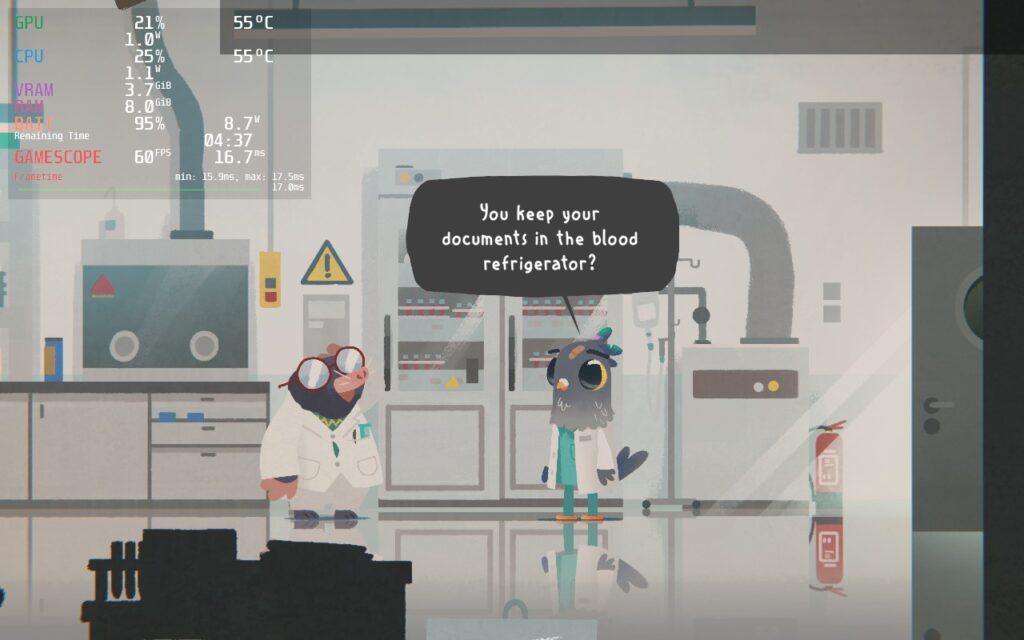
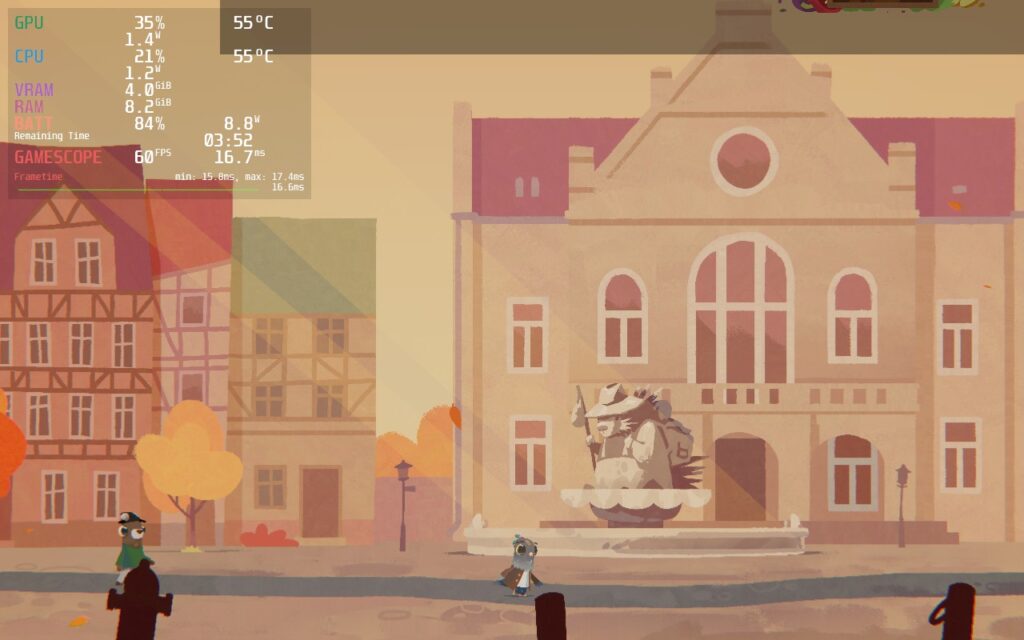

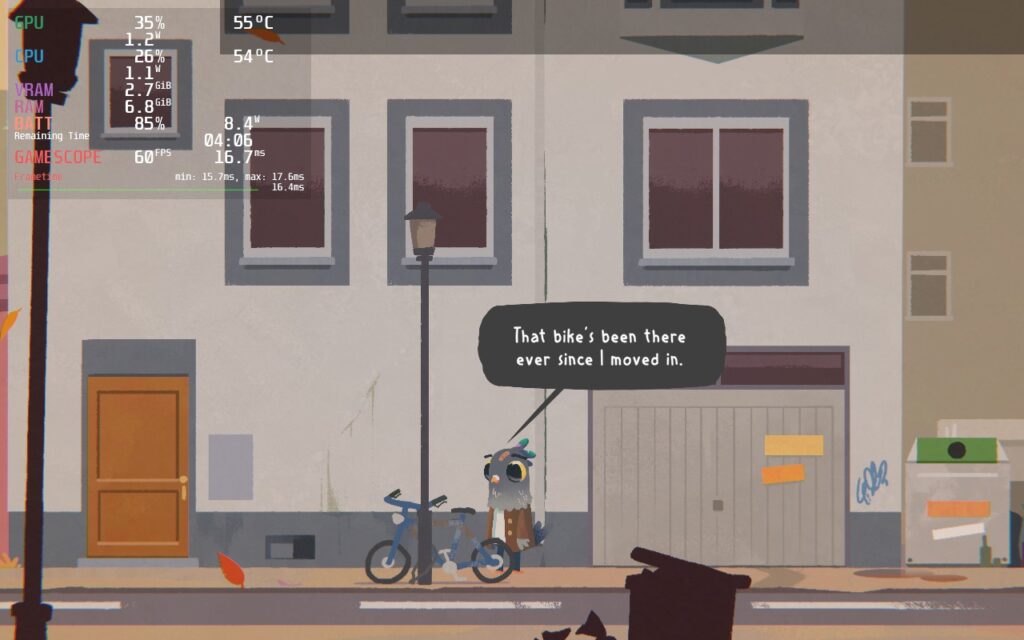
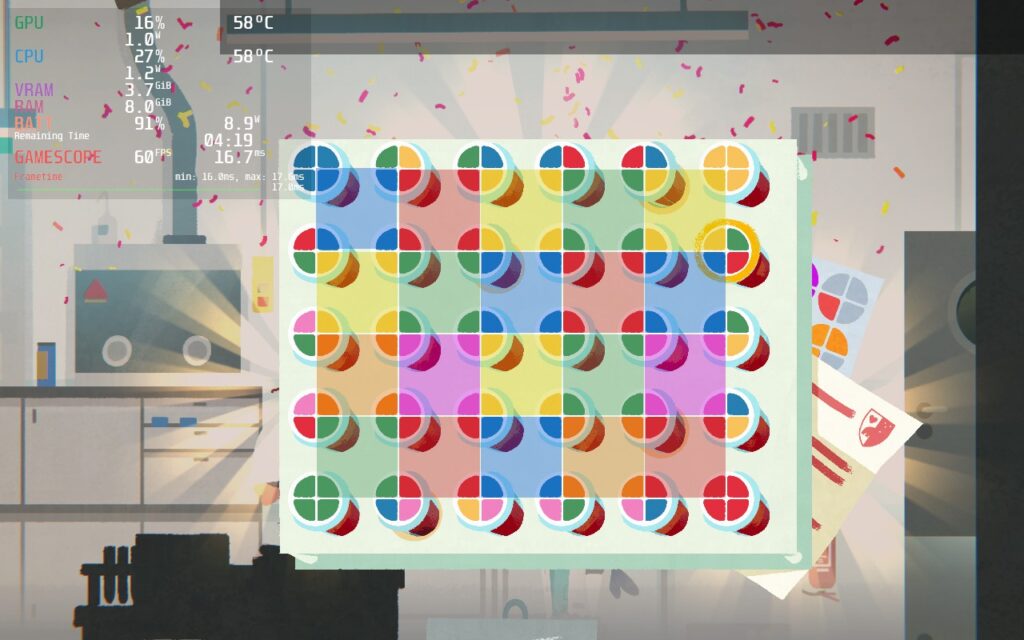
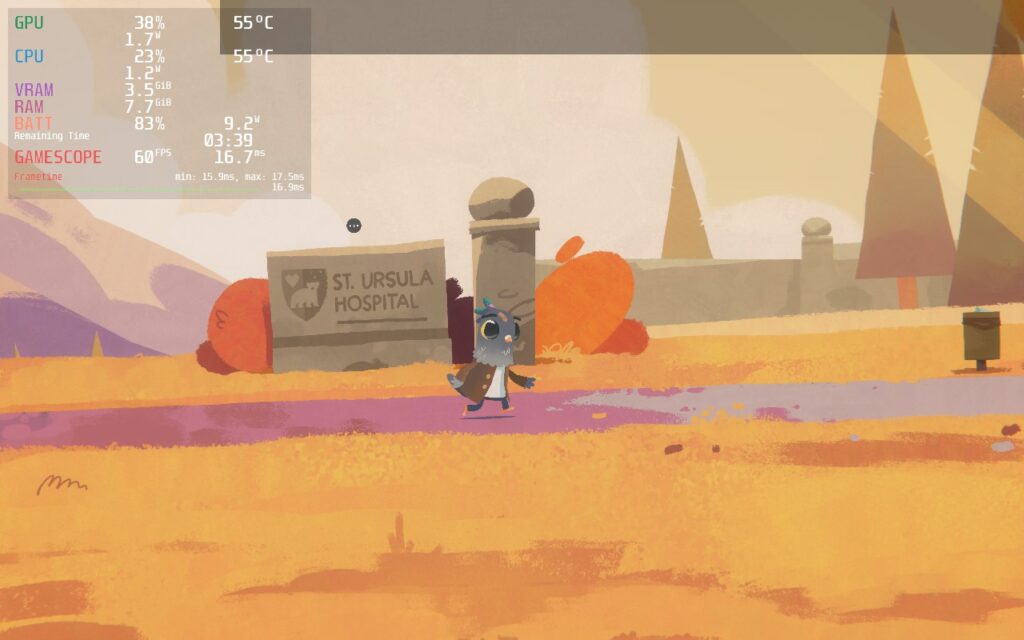
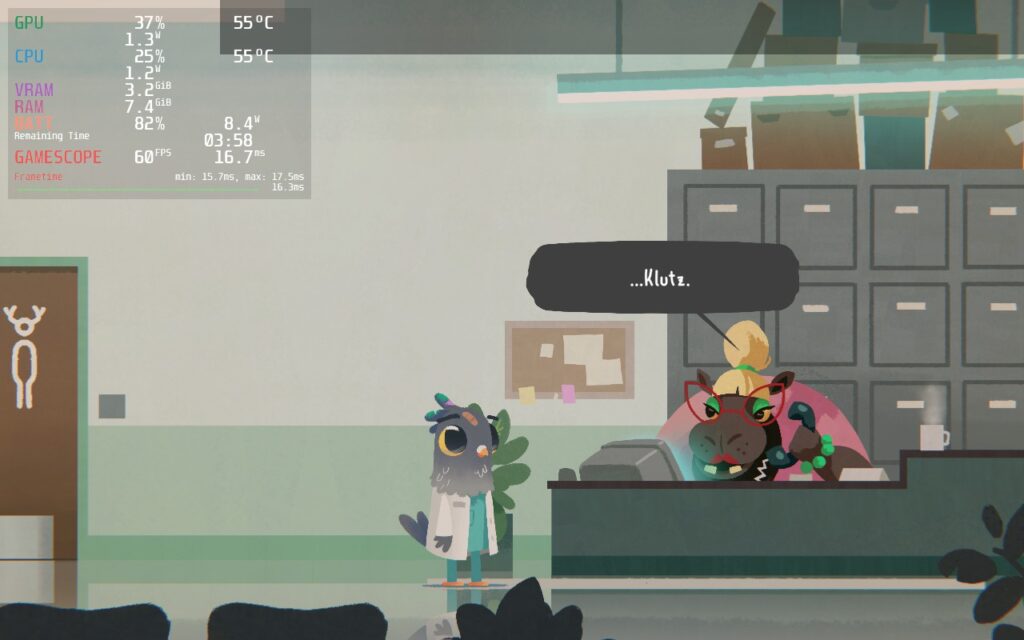
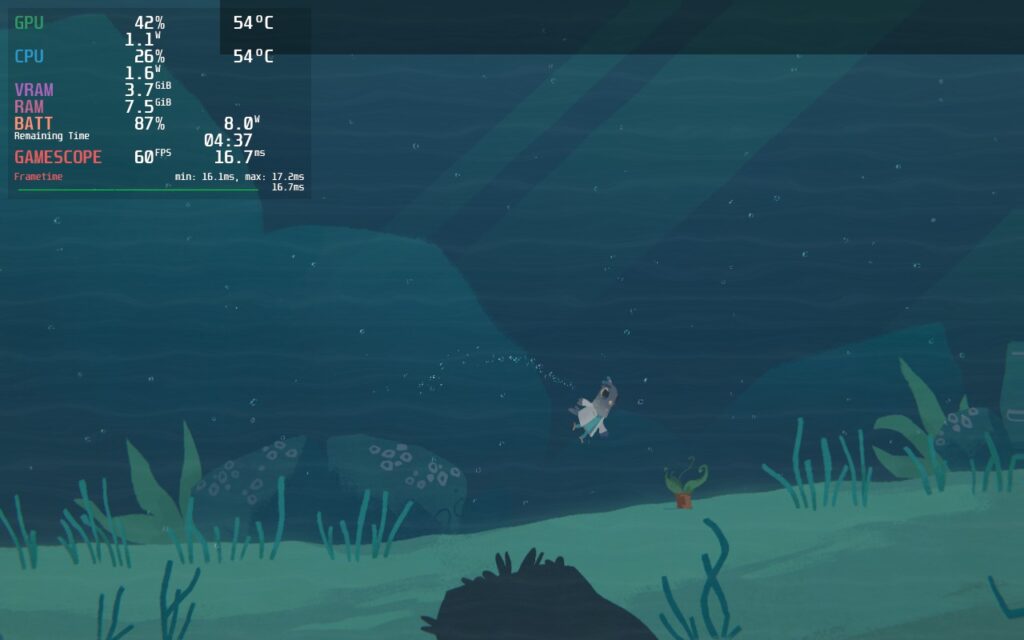
Fall of Porcupine doesn't have cloud saves, but it does support 16:10 resolutions (so no black bars) and has full controller support. Both of these help make sure the game is a great experience on the Deck!
Fall of Porcupine is an excellent story game that has a strong start and middle, but speeds up a little too much towards the end, culminating in an ending that felt like it was missing something. Regardless, the tale was a worthwhile one, shining a spotlight on the healthcare system and its troubles. Thanks to Proton GE, it runs smooth as butter on the Steam Deck and you will have no problems playing, as long as the right Proton layer is installed.
Our review is based on the PC version of this game.
If you enjoyed this review, be sure to check out the rest of the content on SteamDeckHQ! We have a wide variety game reviews and news that are sure to help your gaming experience. Whether you're looking for news, tips and tutorials, game settings and reviews, or just want to stay up-to-date on the latest trends, we've got your back
This game was provided to us by Inti Creates and PressEngine to review. Thank you!
When a demon turns your school into a massive demonic castle, the demon hunter Kamizono siblings must work together to save the day! Grim Guardians: Demon Purge is a 2D Castlevania-esque game set in a twisted demonic world. Swapping between the two sisters, you will slash and shoot your way through the castle and the monster that inhabit it. Save your classmates and destroy gigantic bosses to unlock new sub-weapons to reach new places in the castle.
Grim Guardians: Demon Purge is a game that wows on multiple different fronts. The artstyle is beautiful, the mechanics are interesting, but my favorite part by far...the animations. The developers meshed the visuals with very fluid animations that I love to see on my screen. Slicing up enemies with Maya feels awesome watching her slash them in half so cleanly with 1-2 strokes (some enemies do take more hits). Regardless, I love everything about the aesthetic and animations with this game.
I also do enjoy the gameplay, but I have some reservations about some elements. I like that Maya, the melee sister, has less health, but does more damage, while Shinobu, the ranged sister, has more health but does less damage. My biggest issue was the switching mechanic and Shinobu's movement. While I do like the idea, the switching can only be done when standing still instead of anywhere and I would have loved to be able to switch mid-jump. It also feels a bit weird that you can't move around when you are shooting your gun. These could have been done for balance reasons and it didn't stop me from enjoying the game, but I definitely tried to continually do both of these often enough.
Luckily, enjoying this game on the Steam Deck is easy and optimal right out of the box! This will be a game you can play through fully with a minimal amount of drain and low temps, all at 60 FPS. I did feel a couple of times where it slowed slightly, but it seemed to be frame pacing issues and they didn't happen often enough to be really noticeable.
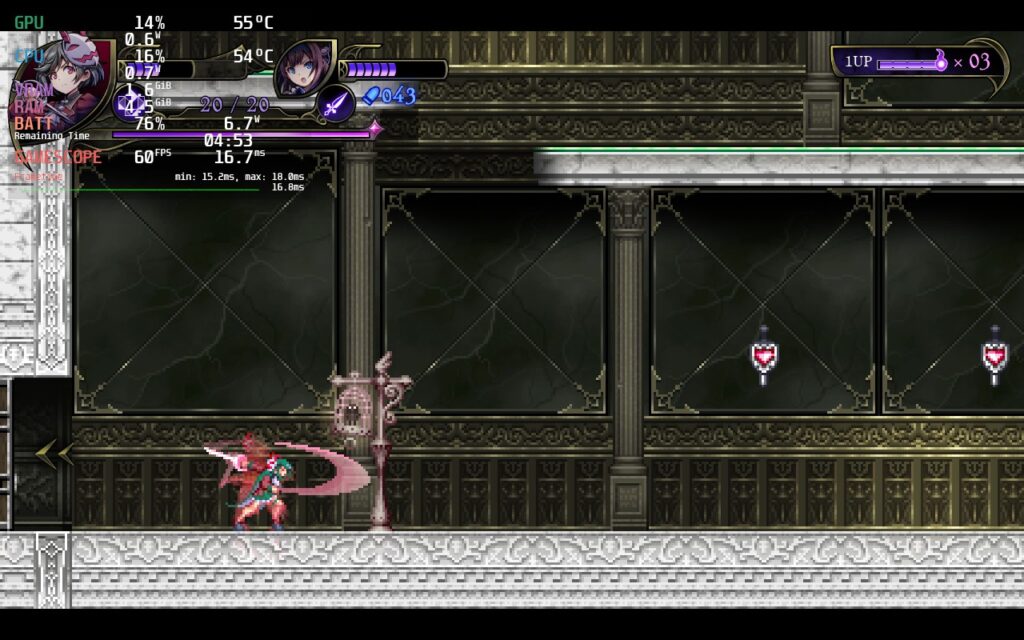
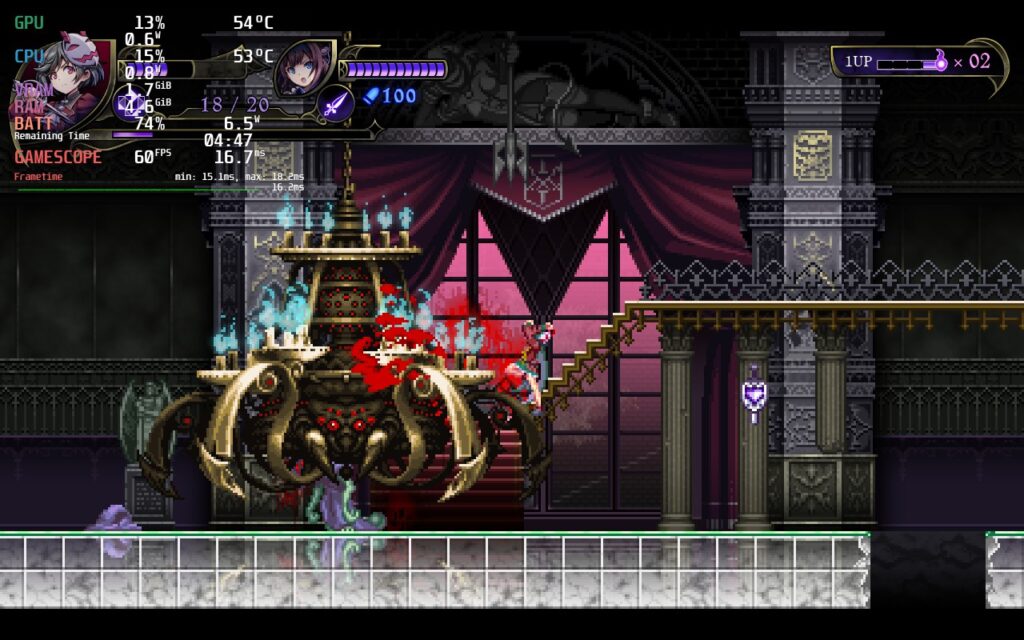
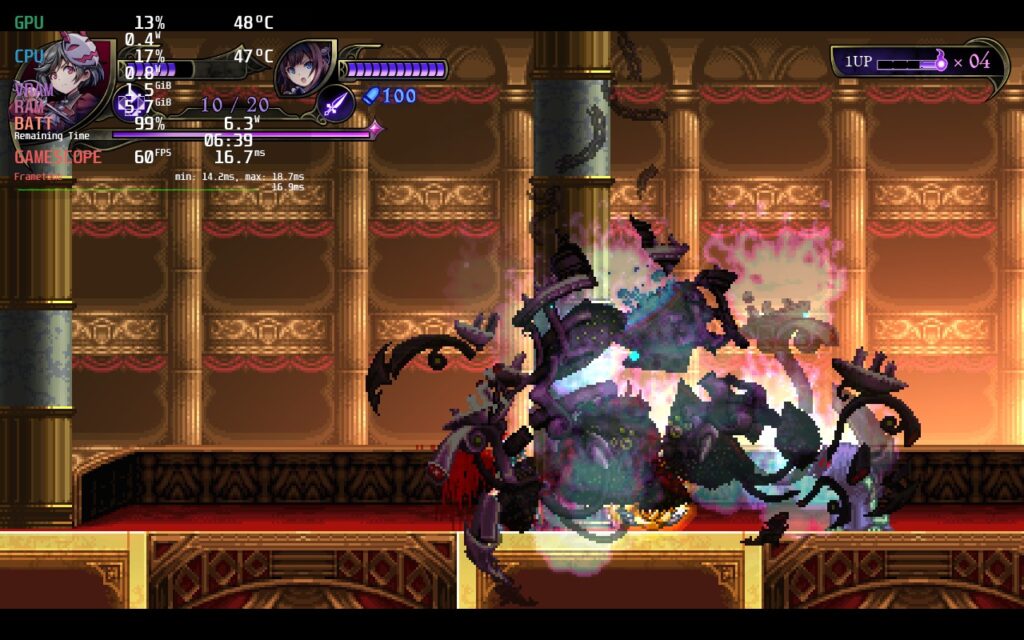
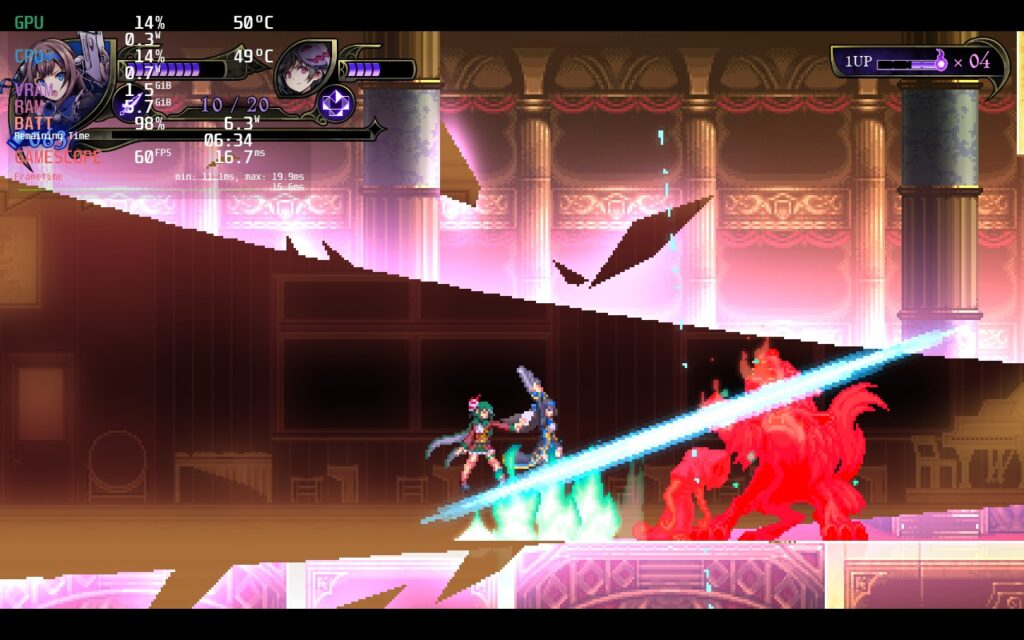
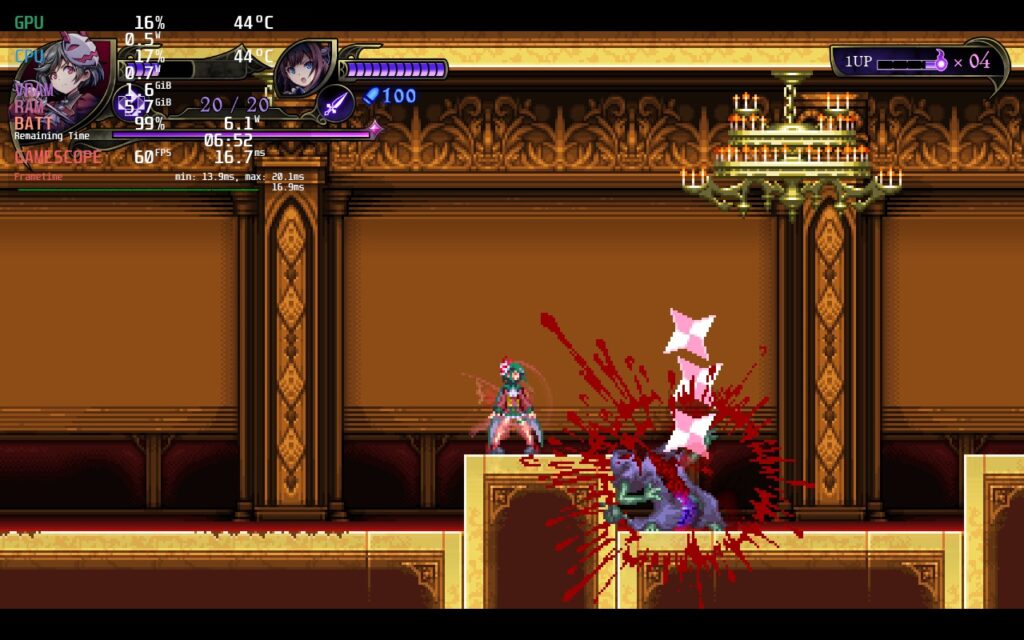
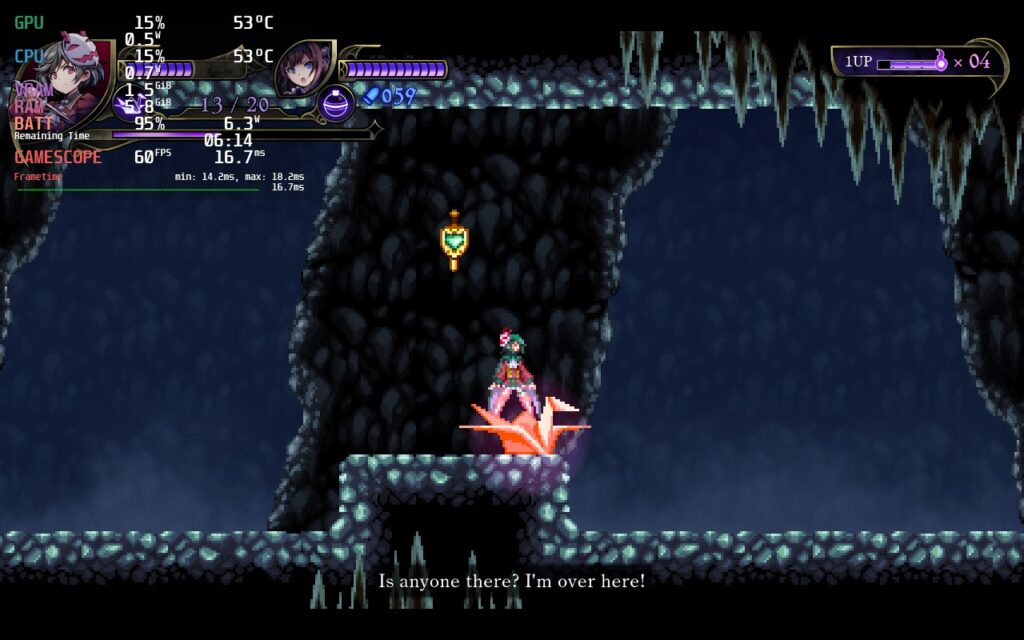
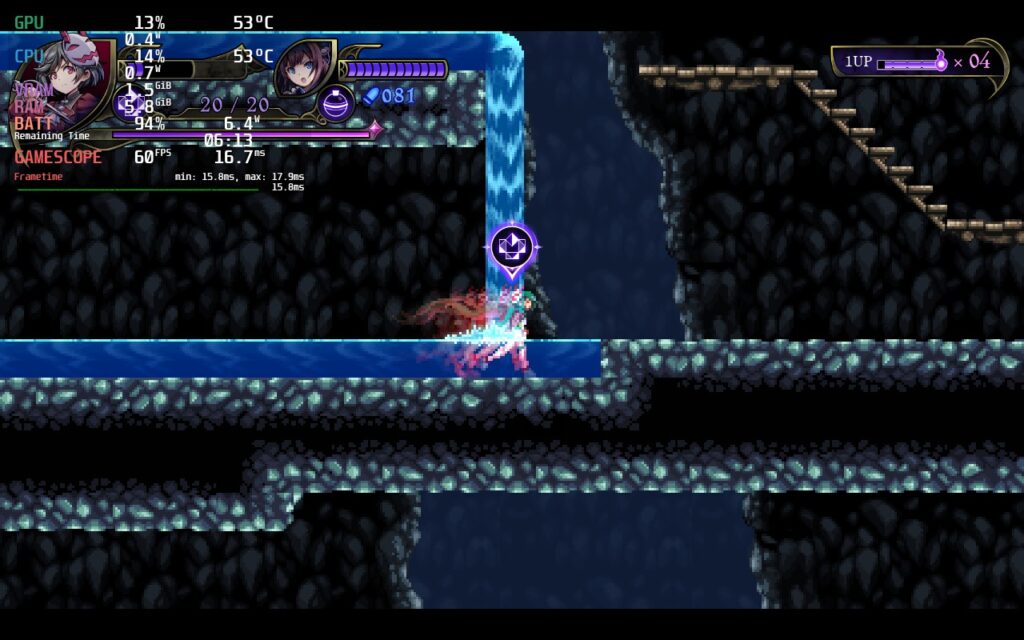
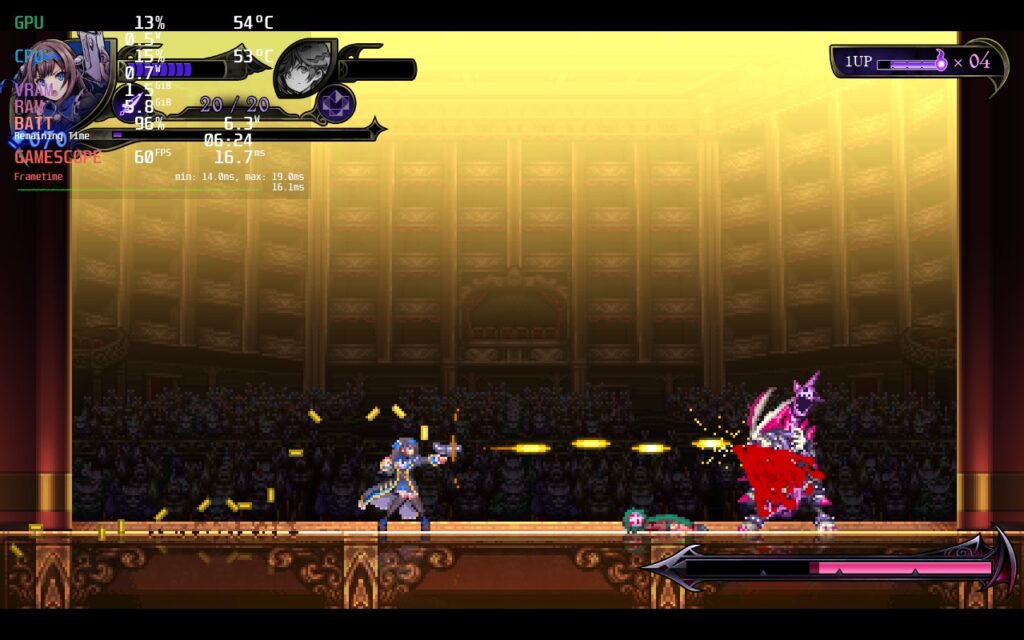
Otherwise, I found no controller/input lag that impacted my playthrough and the game output to a native 1280x720. I did try to force this to 1280x800, but it wouldn't budge. The game has full controller support, which you can customize as the game starts, cloud saves, and local coop that is drop-in (no online though).
Grim Guardians: Demons Purge is a beautiful and well-made game that shines in its presentation and animations. The gameplay loop is pretty wonderful as well, but there are those little nuisances that can feel jarring at times and mess up fluidity of other Castlevania-esque games I have played. Overall, this is still a competent and enjoyable game to play and, thanks to how easy it is to run out of the box, it has become our newest Best on Deck game!
If you enjoyed this review, be sure to check out the rest of the content on SteamDeckHQ! We have a wide variety game reviews and news that are sure to help your gaming experience. Whether you're looking for news, tips and tutorials, game settings and reviews, or just want to stay up-to-date on the latest trends, we've got your back
This game was provided to us by free from the developer/publisher. Thank you!
2D platformers have been one of the staples of video games. Revolutionized by Super Mario, this genre has boomed and expanded into a plethora of different subgenres. By adding in some more advanced combat and downplaying some of the platforming, games like Mega Man came about and took the world by storm. It found a fantastic blend of just enough platforming and addicting action gameplay to keep you coming back for more.
Chenso Club is a new take on the 2D action-platformer, while adding in some unique elements to help it stand out. Aliens have invaded and it's up to a group of heroines to save the world. As one of 5 characters with varied moves and stats, you will traverse across diverse areas while destroying the enemies to replenish your life force and make it through the level. Chenso does incorporate some roguelike features as well, allowing you to not only buy upgrades, but partake in challenges to get them. You can also unlock more upgrades being available to you in-game by gaining followers on the in-game social media site, Chirp. Overall, I think the game itself is really fun and I had a good time playing. For the price, it can be quite worthwhile. But how will it hold up on Deck?
Looking at the game, I am sure you can guess. The game runs fantastic on the Steam Deck. I didn't hit below 60 FPS once during my time playing. The game looks vibrant and gorgeous on the screen and fits perfectly there.
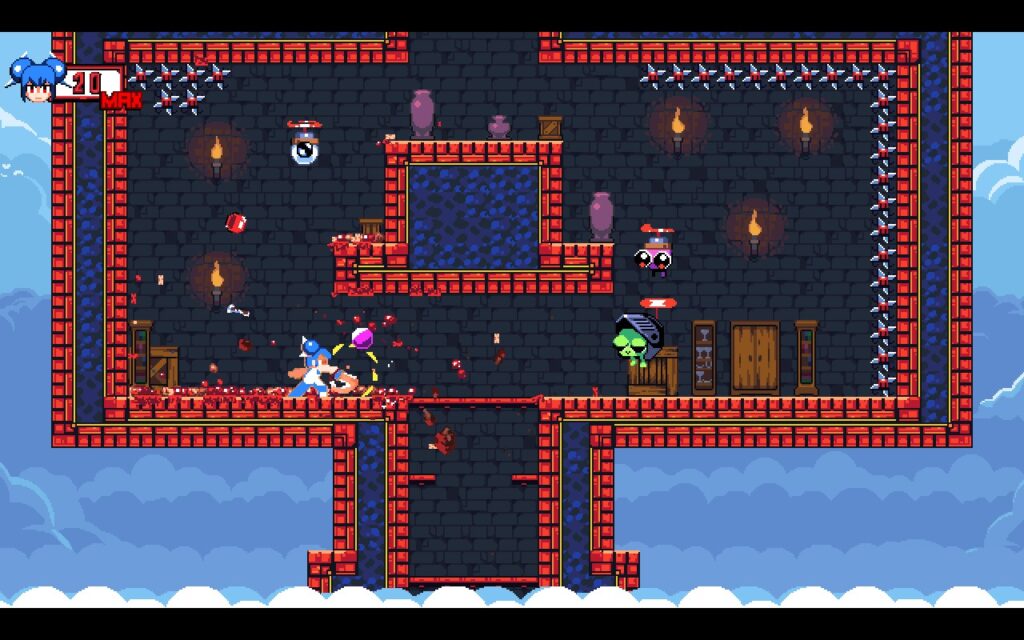
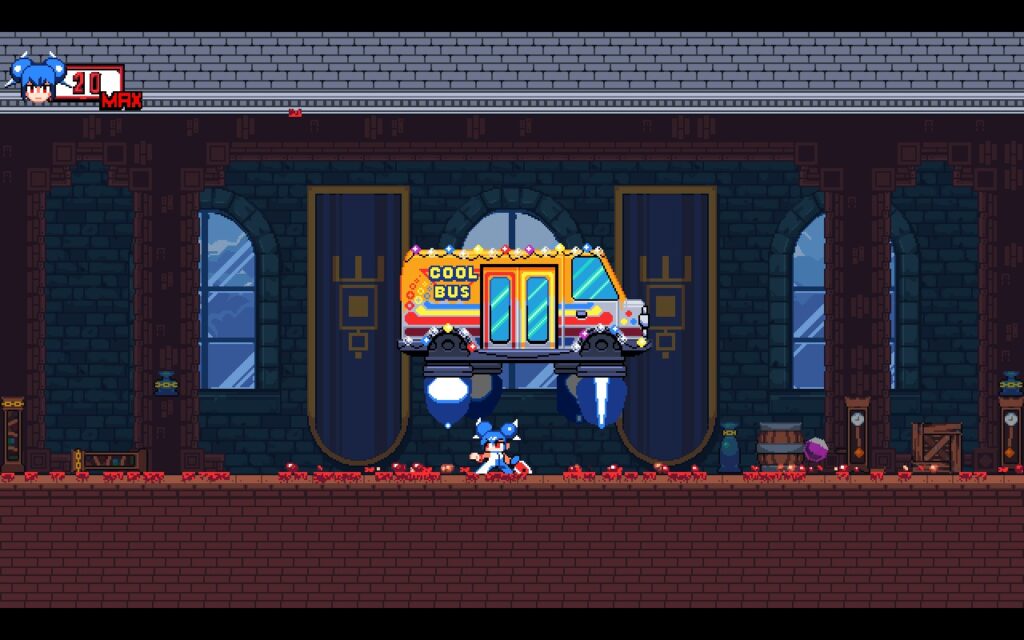
You could set the TDP limit to 4, but it really doesn't matter as the battery will not be eaten up. I did get some weird spikes to 58, but it was a single frame and didn't impact gameplay nor would I have noticed it if I didn't have the graph.
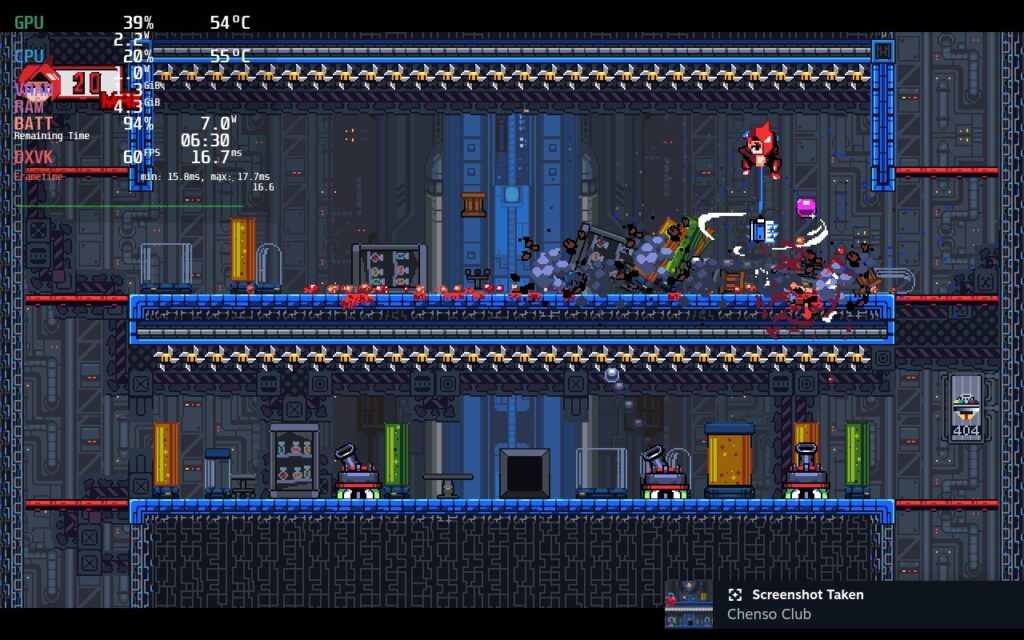
There isn't much more I need to go into performance though, it runs like a charm!
Steam defaults to a KB+M controller layout for the game, which makes no sense as this game actually DOES have controller support. To fix this, you will need to go into your controller settings for Chenso Club and set the layout to "Gamepad With Joystick Trackpad". The game will then automatically swap it over to its controller scheme and there you go. After that, you will be able to play like normal without any issues.
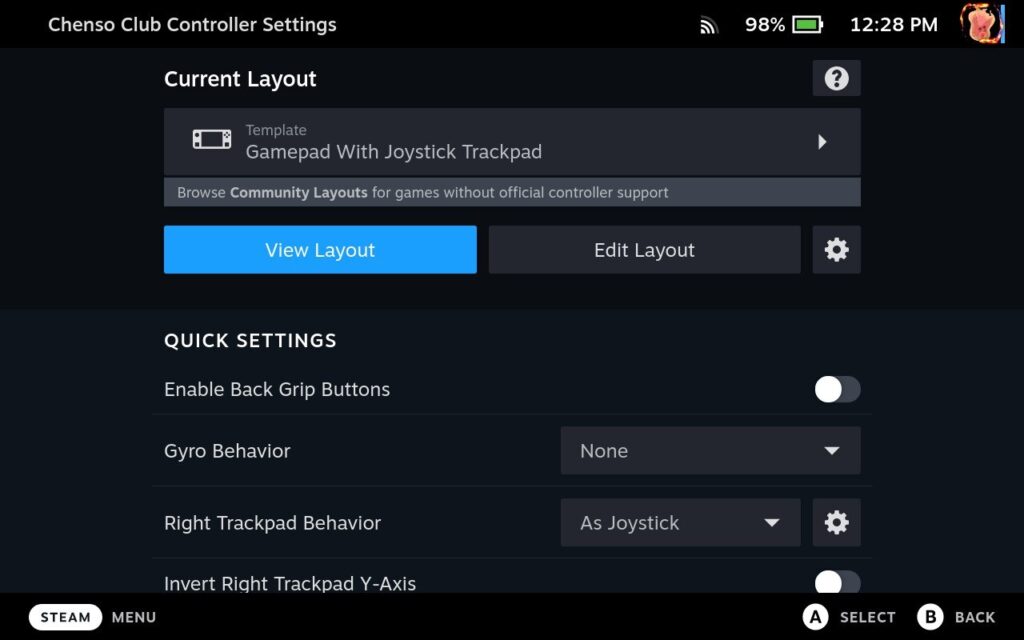
As for bugs, I did encounter 2 that I felt are notable. The first was an issue with dashing. There were a couple times that dashing just didn't want to work. This was especially bad in the bonus levels where you have to keep moving. I had to go upwards and I couldn't dash up. This is the only bug I found that affected my actual gameplay.
The other one was just weird. When I dropped into a new area, my character stopped being able to jump or dash, but was able to walk in the air. I was able to fix this by randomly attacking and it dropped me down, but it still took me a moment to figure out what was going on.
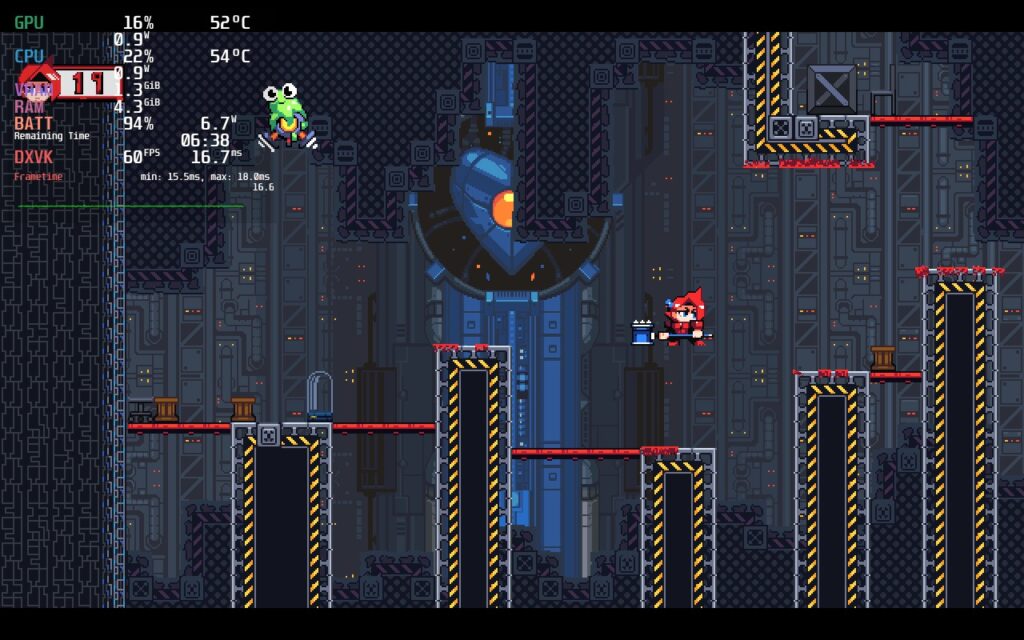
Chenso Club likes letting me walk on air. How kind of them.
Overall, I really did enjoy my time with the game. It doesn't take a lot to run, it is vibrant and beautiful, and the gameplay loop is a good time. The 6.5 hour battery life is always a nice touch and sub 60c temps make me extremely happy, but the bugs can get a little annoying. Regardless of this, you will have no trouble running this game at all on the Deck.
Our review is based on the PC version of this game.
If you enjoyed this review, be sure to check out the rest of the content on SteamDeckHQ! We have a wide variety game reviews and news that are sure to help your gaming experience. Whether you're looking for news, tips and tutorials, game settings and reviews, or just want to stay up-to-date on the latest trends, we've got your back!